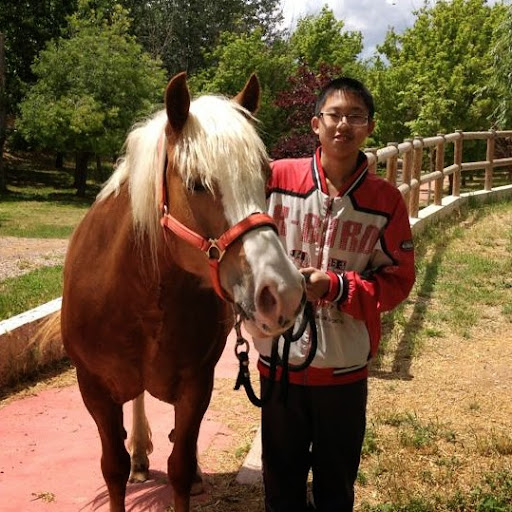Zhong Dian Chen
age ~73
from Plano, TX
- Also known as:
-
- Zhong D Chen
- Zhong Yong Chen
- Zhong Y Chen
- Dian Chen Zhong
- Zhong D Chan
- Zhongdian Chen
- Chen Kong
- Chen Zhongdian
- Phone and address:
- 2604 Brennan Dr, Plano, TX 75075
Zhong Chen Phones & Addresses
- 2604 Brennan Dr, Plano, TX 75075
- Katy, TX
- Sachse, TX
- 3573 Lake Ave APT UPPR, Rochester, NY 14612
- Hampton Bays, NY
- Westhampton Beach, NY
- East Quogue, NY
- Mastic Beach, NY
Us Patents
-
Intermolecular Multiple-Quantum Coherence Mr Imaging In Humans
view source -
US Patent:6528997, Mar 4, 2003
-
Filed:Mar 20, 2001
-
Appl. No.:09/811831
-
Inventors:Jianhui Zhong - Pittsford NY
Zhong Chen - Rochester NY
Wingchi E. Kwok - Rochester NY -
Assignee:University of Rochester - Rochester NY
-
International Classification:G01V 300
-
US Classification:324307, 324309
-
Abstract:In nuclear magnetic resonance imaging of the human brain or the like, multiple quantum coherences, such as intermolecular double quantum coherence (iDQC) between water molecules, are used for soft tissue contrast. A group of pulse sequences are used in which, (a) The standard = /2 pulse in the original CRAZED sequence is replaced with a /3 pulse. The maximum signal derived from iDQCs is increased by a factor of 3{square root over (3)}/4. (b) The position of the acquisition window is adjusted, and a large acquisition window (small bandwidth) is used to sample a broad range of time-domain signals. (c) Receiver dynamic range is optimized. (d) A two-step phase cycle scheme for iDQC-encode gradients is designed to remove additional undesired coherence pathways.
-
Optimized Orthogonal Gradient Technique For Fast Quantitative Diffusion Mri On A Clinical Scanner
view source -
US Patent:62885405, Sep 11, 2001
-
Filed:May 19, 2000
-
Appl. No.:9/573940
-
Inventors:Zhong Chen - Rochester NY
Jianhui Zhong - Pittsford NY
Wingchi Edmund Kwok - Rochester NY -
Assignee:University of Rochester - Rochester NY
-
International Classification:G01V 300
-
US Classification:324300
-
Abstract:A technique for MRI or the like employs optimized orthogonal gradients. For a device having a peak physical magnetic field gradient strength G. sub. 0, the gradients are optimized if, in physical space, one gradient has a value -0. 5G. sub. 0 while the two gradients orthogonal thereto have the value G. sub. That is equivalent to an optimized orthogonal gradient space in which one gradient has a value 1. 5G. sub. 0 while the two gradients orthogonal thereto have the value zero. The gradients are cycled over a sequence of six gradient pulses to provide enough data to calculate the diffusion tensor.
Name / Title
Company / Classification
Phones & Addresses
Director, President
CHEN CAI INC
Nonclassifiable Establishments
Nonclassifiable Establishments
9226 Jensen Dr, Houston, TX 77093
5850 Parkfront Dr, Houston, TX 77036
5850 Parkfront Dr, Houston, TX 77036
HUAY1 REMODELING LLC
BON XIANG INC
YUM YUMMY, LC
Principal
China Star
Eating Place
Eating Place
4565 Griggs Rd, Houston, TX 77021
S
INTERNATIONAL ARMADA INC
6100 Corporate Dr STE 300, Houston, TX 77036
Resumes

Zhong Chen
view source
Zhong Yan Chen
view source
Zhong Chen
view source
Zhong Rong Chen
view source
Electrical Design Engineer At Texas Instruments
view sourceLocation:
Dallas/Fort Worth Area
Industry:
Semiconductors

Zhong Chen
view sourceLocation:
United States
Youtube
Flickr
Googleplus

Zhong Chen
Education:
Georgia Institute of Technology - Computational Science and Engineering, Fudan University - Information and Computing Science

Zhong “John” Chen
Work:
Center for Advanced Materials and Manufacturing of Automotive Components - Graduate Research Associate
Education:
Ohio State University - Materials Engineering

Zhong Chen
Education:
Rutgers University

Zhong Chen

Zhong Chen

Zhong Chen

Zhong Chen

Zhong Chen
Myspace

Zhong Chen
view source
Zhong Kyo Chen
view source
Zhong Da Chen
view source
Zhong Chen
view source
Zhong Chen
view source
Zhong Chen
view source
Zhong Zhong Chen
view source
Zhong Yi Chen
view sourceClassmates

Zhong Zhong Chen
view sourceSchools:
Jesse Ketchum Elementary School Toronto Morocco 1997-1999
Community:
Jim Stiles, Stefan Brady, Leah Hobbs, Paul Kett

Jesse Ketchum Elementary ...
view sourceGraduates:
Rowan Beasley (1984-1986),
Ronald Bradley (1959-1967),
Zhong Zhong Chen (1997-1999),
Eva Maximea (1981-1983),
Kathy Houlding (1974-1977)
Ronald Bradley (1959-1967),
Zhong Zhong Chen (1997-1999),
Eva Maximea (1981-1983),
Kathy Houlding (1974-1977)

International High School...
view sourceGraduates:
Yang Zhong Chen (1984-1988),
Diego Valencia (1997-2001),
Elizabeth Arismendi (1987-1991),
Cuong Truong (1990-1994),
Grzegorz Matysiewicz (1997-2001)
Diego Valencia (1997-2001),
Elizabeth Arismendi (1987-1991),
Cuong Truong (1990-1994),
Grzegorz Matysiewicz (1997-2001)

University of California ...
view sourceGraduates:
Dan Anderson (1976-1978),
Nathan Bartlett (2005-2007),
Zhong Chen (1988-1992),
Matthew Findley (1986-1990)
Nathan Bartlett (2005-2007),
Zhong Chen (1988-1992),
Matthew Findley (1986-1990)
Get Report for Zhong Dian Chen from Plano, TX, age ~73












